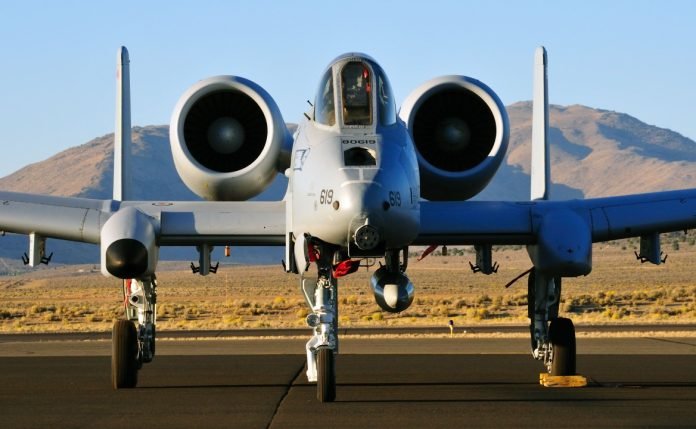Last Updated on January 31, 2024 by Asfa Rasheed
Table of Contents
Titanium 6AL-4V and Its Impact on Aerospace
One of the most noteworthy impacts of Titanium 6AL-4V in the aerospace industry is its contribution to weight reduction. Aircraft and spacecraft are inherently weight-sensitive; every extra pound requires additional fuel or reduces payload capacity. The use of Titanium 6AL-4V allows for the creation of lighter structures without compromising on strength or durability. This aspect is crucial in enhancing fuel efficiency and payload capacity, which are critical parameters in both commercial aviation and space exploration. The impact of Titanium 6AL-4V on aerospace engineering cannot be overstated.
Properties of Titanium 6AL-4V in Aviation Materials
Titanium 6AL-4V’s unique properties stem from its distinctive composition and the meticulous process of its production. The alloy is primarily composed of titanium, complemented by 6% aluminum and 4% vanadium. This specific combination is carefully engineered to enhance the material’s mechanical and physical properties suitable for aviation materials.
The first and most significant property of Titanium 6AL-4V is its high strength-to-weight ratio. It is significantly stronger than most steels, yet it is about 45% lighter. This property is a crucial advantage in aviation, where every ounce matters. By utilizing this alloy, engineers can design aircraft structures that are both lighter and stronger, leading to increased efficiency and performance.
Another key property of this alloy is its outstanding fatigue resistance. Aviation materials are often subjected to repetitive stress and strain cycles, which can lead to material fatigue over time. Titanium 6AL-4V, with its excellent fatigue resistance, ensures the longevity and reliability of critical aircraft components, thereby enhancing flight safety.
Aircraft Design with Titanium 6AL-4V
Lighter aircraft require less fuel, leading to reduced operational costs and lower environmental impact through decreased carbon emissions. The durability of Titanium 6AL-4V is another key factor in its transformative impact on aircraft design. Its resistance to corrosion and fatigue ensures that aircraft components have longer service lives and require less maintenance. This durability is particularly important in components that experience high stress or are exposed to harsh environmental conditions, such as landing gear, fuselage structures, and wing components.
Titanium 6AL-4V in Jet Engines
The role of Titanium 6AL-4V in the development of jet engines is a testament to the material’s exceptional capabilities. Its application in jet engine components has led to notable improvements in performance and efficiency, further solidifying its status as a key material in aerospace engineering. Jet engines components benefit from the alloy’s ability to maintain its strength and resist creep at high temperatures, ensuring reliable performance under demanding conditions. The lightweight nature of Titanium 6AL-4V also contributes significantly to the efficiency of jet engines.
Titanium 6AL-4V is Shaping Space Exploration
The role of Titanium 6AL-4V in spacecraft applications represents a significant advancement in the field of space exploration. Spacecraft, similar to aircraft, greatly benefit from reduced weight, as this directly impacts the cost and feasibility of launching into space. The use of Titanium 6AL-4V allows for the construction of lighter spacecraft structures without compromising on strength or durability. This reduction in weight enables the launch of larger payloads and contributes to the overall efficiency of space missions.
The Lifespan of Titanium 6AL-4V in Aviation
The durability and longevity of Titanium 6AL-4V in aviation are among its most valued attributes, contributing significantly to the material’s widespread use in the aerospace industry. The long lifespan of components made from this alloy is a testament to its exceptional properties and the advantages it brings to aviation.
One of the primary reasons for the extended lifespan of Titanium 6AL-4V in aviation applications is its excellent corrosion resistance. The resistance extends the maintenance intervals and overall service life of critical aircraft components, thus reducing long-term maintenance costs. Another factor contributing to the longevity of Titanium 6AL-4V in aviation is its superior fatigue resistance.
The Machinability of Titanium 6AL-4V
While Titanium 6AL-4V boasts numerous advantages in aerospace applications, machining this alloy presents certain challenges that must be skillfully managed. The alloy’s high strength and low thermal conductivity, while beneficial for its end use, can make machining operations complex and demanding.
One of the primary challenges in machining Titanium 6AL-4V is its tendency to work harden. This means that if a cutting tool does not remove material quickly enough, the alloy hardens at the point of contact, making subsequent machining more difficult and increasing tool wear. To overcome this, manufacturers often employ low cutting speeds, high feed rates, and sharp, hard cutting tools made of materials like carbide or cubic boron nitride.
Despite these challenges, the aviation and aerospace industries have developed specialized machining techniques and tools to effectively and efficiently work with Titanium 6AL-4V. The ongoing advancements in machining technology and techniques continue to mitigate these challenges, making the use of this alloy more viable and widespread.
Cost-Effectiveness and Supply Chain
The use of Titanium 6AL-4V in aerospace applications, while advantageous for its physical and mechanical properties, also involves considerations regarding cost-effectiveness and supply chain dynamics. The cost of Titanium 6AL-4V is higher than many traditional materials used in aerospace due to its complex production process and the cost of raw materials. Supply chain considerations are also crucial when incorporating Titanium 6AL-4V into manufacturing processes. This includes developing relationships with multiple suppliers, investing in material stockpiling, or exploring recycling and reuse of titanium materials to create a more sustainable and secure supply chain.
















